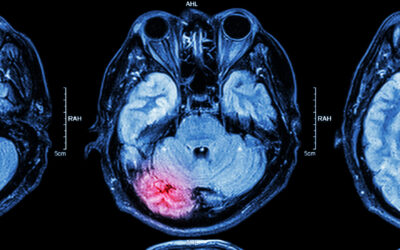Breathe Deeply, Heal Gently: A Journey Inward
At The Well of Life Center, we understand that true healing begins from within. While nutrition, detoxification, and physical therapies play essential roles in restoring wellness, many symptoms, whether physical or emotional, are deeply rooted in unresolved trauma and chronic nervous system dysregulation. That’s why we are honored to now offer Trauma-Informed Introspective Breathwork Therapy (IBT) as part of our whole-body approach to healing.
This powerful modality offers a safe and transformative way to access and release stored emotional trauma using the most natural tool available to us: the breath.

What Is Introspective Breathwork Therapy (IBT)?
Introspective Breathwork Therapy (IBT) is a form of conscious, connected breathing that helps release suppressed emotions, regulate the nervous system, and reconnect individuals with their inner wisdom and body awareness. Developed through the One Breath Institute, IBT is rooted in trauma-informed care, somatic healing practices, and the understanding that emotional pain and trauma are not only psychological but also stored physically in the body.
Unlike simple deep breathing or meditative breath practices, IBT is an intentional, guided process that encourages sustained rhythmic breathing without pausing between the inhale and exhale. This type of breathwork can activate the body’s natural healing mechanisms, helping to bring unconscious material to the surface in a safe and supported way.
Every session is facilitated by myself, Nicola, a certified trauma-informed practitioner. I will create a secure space for you to explore your internal experiences without fear or pressure. The process is gentle, non-invasive, and deeply intuitive, making it accessible even for those who may feel unsure about traditional therapy or have difficulty expressing themselves verbally.

How Does IBT Work?
IBT sessions begin with a grounding conversation between the practitioner and client. This check-in helps identify intentions, emotions, or physical sensations present before entering the breathwork experience. The practitioner may also help guide awareness to current life stressors or patterns that are affecting emotional and physical well-being.
Once the breathwork begins, clients are guided into a connected breathing rhythm—steady inhalations and exhalations through the mouth, without breaks in between. This type of breathing supports the nervous system in shifting from a sympathetic (fight-or-flight) state to a more parasympathetic (rest-and-digest) or integrated state.
As the breath deepens, emotional layers begin to surface. This might show up as physical sensations (tingling, heaviness, heat), emotional release (crying, laughter, vocal expression), or mental clarity and insight. The practitioner remains present and attuned, offering grounding, verbal support, or hands-on assistance (if appropriate) to help guide the process.
After the active breathing phase, clients enter a period of rest and integration. This quiet space allows the nervous system to settle and new awareness to take root. The session closes with time to reflect, ask questions, or simply rest in the spaciousness of what was released.
Importantly, the experience is never forced. Clients remain in control of their process at all times, and the practitioner honors each person’s pace, readiness, and boundaries.

Why Trauma-Informed Care Matters
Trauma-informed breathwork is different from traditional breathwork because it prioritizes safety, trust, and self-agency. Many people have experienced trauma—whether acute, developmental, or systemic—and healing requires more than just mental understanding. The body often carries memories and reactions long after the mind has tried to move on.
A trauma-informed approach acknowledges that trauma can live in the nervous system and tissues, and that healing happens when we reconnect with our body in a way that feels supportive and empowering. IBT never pushes a person into overwhelming emotional territory, but instead creates a space where healing can happen gradually, gently, and with compassion.
The Benefits of Introspective Breathwork Therapy
The healing potential of IBT is broad and far-reaching. Because it works with both the emotional and physical body, it can benefit people with a wide range of experiences and goals. Some of the most common benefits include:
- Emotional Release & Resilience: Safely release sadness, grief, fear, anger, or numbness stored in the body
- Nervous System Regulation: Shift from chronic stress, anxiety, or burnout into calm, clarity, and rest
- Mental Clarity & Insight: Gain perspective on long-held patterns, beliefs, or emotional blocks
- Improved Physical Health: Support for chronic pain, fatigue, tension, and digestive concerns linked to stress
- Spiritual Connection: A deeper sense of connection with self, intuition, and a greater sense of meaning
- Increased Self-Compassion: Strengthen the relationship with your body, your emotions, and your inner truth
Many clients describe feeling lighter, clearer, more present, and deeply restored after sessions. While each session is unique, the cumulative effect of IBT can support long-term emotional healing and inner transformation.

Who Can Benefit from IBT?
Introspective Breathwork Therapy is ideal for anyone who:
- Feels stuck, overwhelmed, or disconnected
- Has experienced trauma or ongoing stress
- Wants to feel more grounded and emotionally balanced
- Is seeking a somatic (body-based) approach to healing
- Is navigating life transitions, grief, or emotional pain
- Desires a deeper connection with themselves and their body
Whether you’re just beginning your healing journey or looking to explore new layers of emotional growth, IBT meets you exactly where you are—with compassion and care.
Begin Your Journey with Breath
If you’re ready to explore what lies beneath the surface, release what no longer serves you, and breathe into a new season of clarity and renewal, IBT may be the next step in your journey. Call The Well of Life at 215-340-3930 to schedule with me today. You can also use the form located at the bottom of our page on IBT here.
Your breath is not just a function, it’s a bridge. A path inward. A tool for transformation. Let it guide you back home.











0 Comments